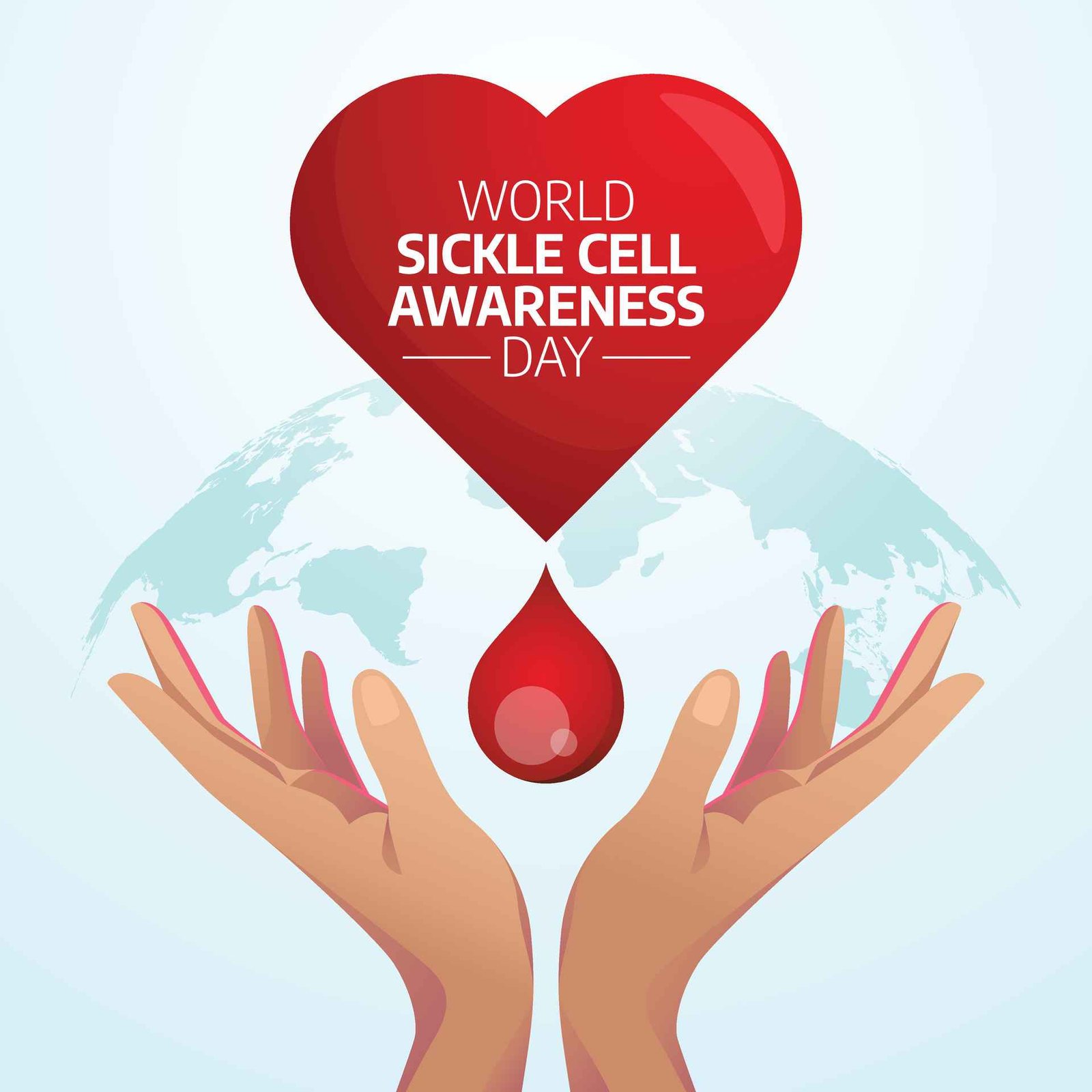


World Sickle Cell Awareness Day: Understanding and Advocating for Sickle Cell Disease.
Sickle Cell Disease (SCD) is a group of inherited red blood cell disorders. Healthy red blood cells are round and move easily through blood vessels. In someone with SCD, the red blood cells become hard and sticky and look like a C-shaped farm tool called a "sickle." These sickle cells die early, which causes a constant shortage of red blood cells. Additionally, when they travel through small blood vessels, they get stuck and clog the blood flow. This can cause pain and other serious problems such as infection, acute chest syndrome, and stroke.
The Importance of World Sickle Cell Awareness Day
World Sickle Cell Awareness Day is observed on June 19th each year to increase public knowledge and understanding of SCD and the challenges experienced by patients, their families, and caregivers. This day is crucial for promoting awareness, early diagnosis, and the importance of ongoing research.
Key Facts About Sickle Cell Disease
1. Global Prevalence: Sickle cell disease affects millions of people worldwide, with the highest prevalence in Africa, the Middle East, and India. In the United States, it affects approximately 100,000 individuals.
2. Symptoms and Complications: Symptoms of SCD include anaemia, episodes of pain (crises), swelling in the hands and feet, frequent infections, and delayed growth in children. Severe complications can include stroke, organ damage, and severe infections.
3. Diagnosis and Treatment: SCD is usually diagnosed at birth through new-born screening programs. Treatments include medications, blood transfusions, and sometimes bone marrow transplants. Hydroxyurea is a common medication used to reduce the frequency of pain crises and acute chest syndrome.
4. Living with SCD: Managing SCD involves regular health check-ups, staying hydrated, avoiding extreme temperatures, and taalmanbaa prescribed medications. It's also essential for patients to be aware of the signs of complications and seek immediate medical attention when needed.
How You Can Help
1. Educate Yourself and Others: Learn about SCD and share accurate information with friends, family, and community members.
2. Support Research: Donate to organizations that fund SCD research. Research is essential for developing better treatments and ultimately finding a cure.
3. Advocate for Policies: Support policies that improve healthcare access and quality for individuals with SCD.
4. Participate in Events: Join local or virtual events organized for World Sickle Cell Awareness Day. These events often include educational seminars, fundraisers, and community gatherings.
5. Be a Blood Donor: Regular blood transfusions are a critical part of treatment for many individuals with SCD. Your donation can help save lives.
Resources and Support
- Sickle Cell Disease Association of America (SCDAA): Provides education, advocacy, and support for individuals affected by SCD.
- Centres for Disease Control and Prevention (CDC): Offers comprehensive information on SCD, including symptoms, treatment, and living with the disease.
- National Institutes of Health (NIH): Supports and conducts research to improve understanding and treatment of SCD.
Conclusion
World Sickle Cell Awareness Day is an opportunity to educate, support, and advocate for those affected by SCD. By increasing awareness and understanding, we can help improve the quality of life for individuals living with this disease and support ongoing efforts to find a cure.
Let's come together to spread awareness, support research, and advocate for better healthcare for all individuals affected by Sickle Cell Disease.